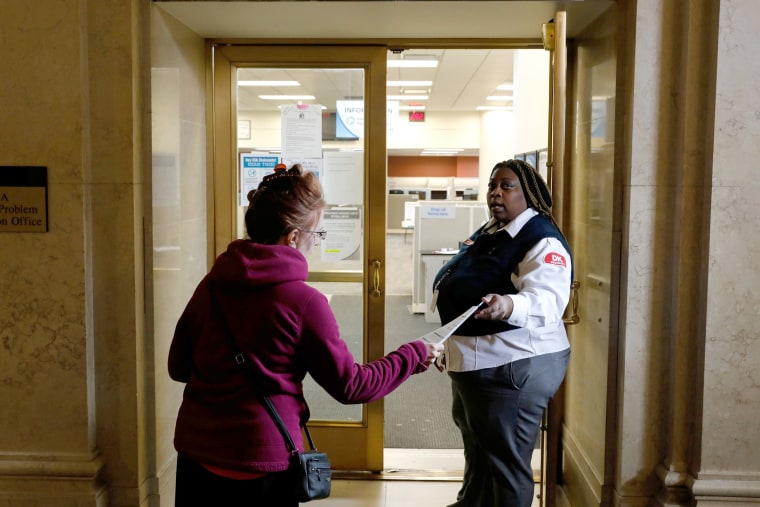This op/ed originally appeared on Invest in You: Ready. Set. Grow., a CNBC multiplatform financial wellness and education initiative, in partnership with Acorns.
As the country braces for yet another brutal week of job losses, it’s increasingly clear that the pain — like the coronavirus itself — is spreading unequally, with women disproportionately slammed.
We’re in a full-blown “she-cession.” Women accounted for 55 percent of the 20.5 million jobs lost in April, with especially high unemployment rates for those ages 20–24 and over 50, as well as for women of color. Women are heavily represented in industries hardest hit by the virus, including travel, restaurants, and childcare, and they make up more than 60 percent of low-wage workers. They bear the brunt of childcare, homeschooling and housework, putting them further at a disadvantage.
Even more disturbing, the damage to women post-pandemic is set to intensify — unless we intervene now. The reason: Many of the diversity gains over the past few years have been due to the historically tight labor market. With unemployment rates low, companies needed bodies. They invested in broader recruiting efforts and focused resources on retaining, not just hiring, diverse talent.
Those moves should be more important now than ever. A mountain of research shows that companies with diverse workforces weather recessions better than those without. A Fortune magazine analysis concluded that from 2007–09, stock prices for S&P 500 companies plunged by almost 36 percent, but the most diverse companies saw gains averaging 14.4 percent.
During high unemployment, ‘diversity is disposable’
Yet during periods of high unemployment, diversity goes out the window. It’s seen as disposable. Diversity and inclusion programs get gutted. Case in point: In October 2008, as the financial crisis was still unfolding, 39 percent of HR professionals polled said budgets for diversity and anti-harassment training had already been slashed.
The current crisis suggests the damage will be deeper. The United Nations has warned of a “shadow pandemic,” with U.N. Secretary-General Antonio Guterres noting it “is having devastating social and economic consequences for women and girls.”
The “disproportionate negative effect” on women’s employment is “likely to be persistent,” and workers who lose jobs are “likely to have less secure employment in the future,” according to a new working paper from researchers at Northwestern University, the University of California San Diego and the University of Mannheim.
In other words, women are not only suffering more economic damage now; they are likely to continue to suffer into the future.
Industry groups are ringing alarm bells. The Drum, a marketing trade publication, recently warned that “furloughs, pay cuts and layoffs have the potential to disrupt a decade’s worth of progress with regards to diversity.” A Bloomberg Law report noted that women and minorities were overrepresented among the 10,000 lawyers who lost jobs in the Great Recession, and there are new concerns that those groups “could bear the worst of the financial pain.”
The peculiarities of remote work have further disadvantaged women. Researchers have found that in physical meetings, women are interrupted three times more frequently than men, and that when they are the minority in a room, their voices are often not heard or their ideas are attributed to men. Those tendencies are amplified in videoconference meetings, where women can’t make use of body language or the other subtle signals they’ve carefully honed to try to get a voice.
Female speech patterns in meetings, which tend to be more succinct — women are penalized if they speak more than others, while men are rewarded — also work against them. Linguistics professor Susan Herring of Indiana University in Bloomington studied digital communications and concluded that “computer networks do not guarantee gender-free, equal-opportunity interaction, any more than any previous communication technology has had that effect.”

Stemming the damage
It doesn’t have to be this way. I’ve spent the past two years working with companies and organizations that are trying to close the gender gap. Until the virus struck, we had seen some of the strongest progress in decades. For the first time in 2019, women made up the majority of the college-educated workforce; by early this year, they made up the majority of the entire U.S. workforce. Companies funded programs to entice young women to join male-dominated STEM fields and wooed older professional women who had dropped out to raise kids.
Those gains are now threatened. But there’s still time to stem the damage. At the federal level, it’s time to set aside bailout funds not just for companies but for childcare. Congress provided a measure of temporary relief for some families with the stimulus bill, but it barely made a dent. We need a serious conversation about government-funded or subsidized childcare in the way that we have government-funded public schools. Childcare is especially essential for single moms, who make up the vast majority of the 11 million single-parent U.S. households. Single working parents spend more than half of their income on childcare, and daycare in most states costs more than college.
With both men and women at home, it’s also time — finally — for a serious effort to institute paid maternity or family leave. The United States remains the only industrialized country without it. Paid sick leave is essential as well.
Companies can do their part by conducting gender wage-gap analyses to close the gender wage gap. And we can put guard rails around investment into companies to encourage support for families. Goldman Sachs took a baby step by requiring clients to have at least one woman on the board in order to go public. How about requiring equitable policies like wage parity and family leave? Considering the extensive evidence that those measures lead to greater financial success, they should be a business imperative for investors, not an optional “nice to have.”
There are some glimmers of hope. Working mothers have often been shut out of high-paying jobs because of the requirements for face time, long hours and travel. At a time when the CEOs of the most powerful companies in the world are working from their basements, let’s acknowledge that remote working and flexibility work. It’s no longer an excuse to cross off women or other disadvantaged groups from the list
The bottom line is, we have to stop looking at issues like family leave, childcare and diverse workforces as luxury items. They aren’t. They are business imperatives. Decades of research back that up. How tragic that it’s taking a global pandemic and tens of thousands of American deaths to prove it.
Joanne Lipman is a CNBC contributor. Lipman is a Distinguished Journalism Fellow at the Institute for Advanced Study in Princeton and author of “That’s What She Said: What Men and Women Need to Know About Working Together.”
